Pisa - Science Museums and Sites of Technology
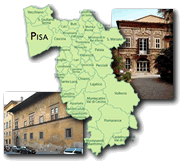
The centuries-old activity of the University of Pisa with its schools of law, botany and medicine has left important signs also in the city’s urban fabric and museum system. Visiting these collections means tracing back the history of European science from the viewpoint of one of the most famous and vanguard observers from the 14th century onward. Pisa indeed conserves precious and rare tokens of architecture tied to industrial and manufacturing development which concerned the city as of the early 19th century.
One of the oldest university collections is the Museo Botanico of the University of Pisa, most of the present layout of which dates to the late 18th century.
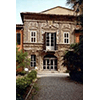
A "Gallery" or Museum of Natural History, also containing plant specimens, was instituted at Pisa's Botanical Gardens around 1591 at the initiative of Grand Duke Ferdinand I de' Medici, who contributed to enriching the collections with rare, precious pieces, in keeping with the taste of the time. Today, only a few rooms of the sixteenth-century museum remain, reached through the Botanical Gardens, while the surviving materials are kept in the Museo di Storia Naturale at Calci.
Towards the end of the 18th century the organisation of today's Botanical Museum was begun, thanks to the commitment of Gaetano Savi, Professor of Botany and Director of the Gardens until 1842. At present the Museum contains plant specimens and collections of plants gathered from the time of its origin for the purpose of study and as teaching aids. Specifically, the General Herbarium is formed of university collections dating from the 18th century to the present, while other Personal Herbariums, consisting of the collections of several different botanists, were acquired by the university from the late 19th century to around 1960. Three other collections are noteworthy: the wood collection, with longitudinal and cross sections of various arboreal species; the collection of plant samples including those of fruit, flowers, inflorescences and seeds; the collection of fossils coming from Tuscany and Lazio, dispersed during World War II and found again in the 1990s.
Also interesting are the wax models of fruits, macroscopic fungi [non si usa anche in inglese "macromycetes" per macromiceti?] and anatomical parts of various plants, made in the period 1830-1840 by the famous Florentine wax modeller Luigi Calamai, and the educational plates, consisting of large panels with pencil or ink drawings, and occasionally water-colours, accomplished mainly by Enrico Cristofani in the second half of the 19th century.
The Museum shares with the Botanical Gardens a Library and Archives, kept at the rich Library of the Department of Botanical Science.
(Francesco Marchetti)
Not far away, on the very central Via Santa Maria, the collection of surgical and diagnostic instruments which belonged to the Santa Chiara Hospital are on show.
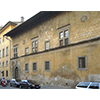
 Centro Documentazione Tutela e Valorizzazione del Patrimonio Culturale e Scientifico della SanitÓ Pubblica
Centro Documentazione Tutela e Valorizzazione del Patrimonio Culturale e Scientifico della SanitÓ Pubblica
The Centre was established in 1994, in the former "Trovatelli" Hospital of Pisa (for orphans), for the purpose of conserving and promoting the historical-scientific heritage of the Pisa Hospital Authority. A rich collection of medical instruments (about 800 objects) is exhibited on the first floor. The collection, coming from the Santa Chiara Hospital, includes surgical instruments and those for diagnostics and therapy dating from the mid-19th century, such as a sphygmograph for recording the arterial pulse, a Potain aspirator for performing thoracentesis (puncture of the thoracic cavity for draining) and a Forlanini device for treating tuberculosis. The centre also contains coeval hospital records, including the inventories of the Pisa Hospital Authority and a collection of catalogues from instrument manufacturers. The oldest archives are kept, instead, in the Pisa State Archives. The Hospital Authority's present-day heritage of records has recently been computerised and inserted in a data base containing over 12,000 documents.
(Elena Fani)
If you are interested in the history of medical research, we advise a visit also to the Museo di Anatomia Umana of the University of Pisa, located on the street parallel to Santa Maria and visitable on request. Here you will find an interesting collection of skeletons and anatomical statues.
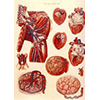
 Museo di Anatomia Umana del Dipartimento di Morfologia Umana e Biologia Applicata dell'UniversitÓ degli Studi di Pisa
Museo di Anatomia Umana del Dipartimento di Morfologia Umana e Biologia Applicata dell'UniversitÓ degli Studi di Pisa
The Museum, located in the Pisa School of Medicine and Surgery, at the Human Anatomy Section of the University of Pisa Department of Human Morphology and Applied Biology, was inaugurated on November 15, 1832 under the name of Anatomical Cabinet in a room of the "Anatomical Establishments" of the Santa Chiara Hospitals. The promoter of the initiative was Tommaso Biancini, "dissector and tutor in anatomy", but during the course of the century the Museum was significantly enlarged by the Pistoian physician Filippo Civinini, author of the first and most important catalogue of the collections. The "Anatomical Establishments", subject of particular attention in the nineteenth-century guides to the city, housed the prepared specimens utilized for research and was the site of the lessons taught in the scenographic and fascinating "Anatomical Theatre" by some of the leading figures in the Pisa medical school (Paolo Mascagni, Pietro Duranti, Filippo Civinini, Filippo Pacini, ad Guglielmo Romiti). In 1856 the collection already numbered 1617 pieces. In 1884 part of the pathological material was transferred to the museum of the new Institute of Pathological Anatomy.
The anatomical collection, dating from around the middle of the 19th century, includes several different groups: osteological (bones, entire skeletons of different human races, foetal skeletons, skulls), syndesmological (joints and ligaments), angiological (anatomical statues, prepared specimens pertaining to the heart and the blood vessels), splanctological (specimens prepared in formalin of the digestive, respiratory, nervous and urogenital systems) and embryological (foetuses and appendages of the foetus). It also contains anatomical models in wax and a set of extraordinary anatomical plates designed by Antonio Serantoni for the Anatomia Universale (Anatomia Universa XLIV tabulis aeneis iuxta archetypum hominis adulti accuratissime repraesentata) by Paolo Mascagni, published in Pisa starting in 1823. Mascagni's death mask, modelled in wax, is displayed in a glass case. Lastly, the museum has an archaeological collection with pre-Columbian material coming from excavations conducted by Carlo Regnoli between 1860 and 1870: mummies, skulls and grave goods consisting of utensils, fabrics and some hundred vases from the Chim¨ and Chancay cultures of the Peruvian coast, dating from the twelfth to the sixteenth century. Two Egyptian mummies are also exhibited.
(Graziano Magrini)
Since 1989, the junction of Via Nicola Pisano and Via Volturno has marked the location of the Museo degli Strumenti per il Calcolo, a unique collection with more than 600 instruments, belonging to different scientific disciplines.
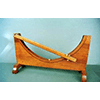
The Centre for the Conservation and Study of Scientific Instruments was created in 1989 with the purpose of valorising the antique instruments from the Experimental Physics Laboratory of Pisa, which are currently part of the patrimony of the Department of Physics of the University of Pisa. The Centre attends to restoring the instruments and also holds temporary exhibitions. In 1994, the National Museum of Calculation Instruments was born. It is managed by the Galileo Galilei Foundation and, as of 2003, has housed the Centre and its collections.
The collection of calculation instruments (about 2000 pieces) has mechanical, electric and electronic devices, while the collection of scientific instruments contains more than 600 instruments associated with various scientific disciplines (electricity, acoustics, electromagnetism, astronomy, measurements, optics and mechanics). Thermometers, pneumatic machines, scales, astronomical clocks and instruments, testify to the extraordinary development of sciences in Pisa and Tuscany between the 17th century and late 20th century. Among the most significant groupings, let us cite the instruments of Carlo Alfonso Guadagni, the first teacher of Experimental Physics at the University of Pisa from 1749 to 1795, and director of Lord Cowper’s Physics Laboratory in Florence; the pneumatic machine signed and dated by the great builder from Leyden Jan van Musschenbroek; the instruments for the old astronomical observatory; the nineteenth-century instruments and the holding of physicist Antonio Pacinotti, which includes memorabilia, machines and the library (with manuscripts and correspondence). It has recently received the gift of a Galilean compass of the 17th century from the Fondazione Cassa di Risparmio di Pisa.
(Alessandro Tosi)
Crossing the Arno and taking Via Cesare Battisti and then Via Francesco Bonaini, you finally reach the building erected in 1841 to serve as the city railway station. The complex which today houses a fruit and vegetable market, is one of the best-preserved railway stations in grand-ducal Tuscany.
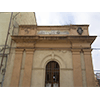
When Grand Duke Leopoldo II of Tuscany decided to order the construction of a railway line to connect Livorno and Florence, four routes were proposed, only one of which passed through Pisa. British engineer Robert Stephenson who practised in the first half of the 19th century, convinced the Grand Duke of the opportuneness of conjugating economic-commercial necessities with those of the population, suggesting a route which passed through Livorno, Pisa, Pontedera, Empoli, and Florence, so that it could be used to transport goods and people. The realisation of the project by successive blocks required seven years: the construction of the first tract between Livorno and Pisa went on from June 1841 to March 13, 1844, day of its inauguration. This was also the period of the construction of the Station that was to receive the first tract of the Leopolda railway. Designed by Florentine architect Giuseppe Martelli and still in good repair, the structure was divided into two aisles measuring 66 metres in length, dived by arches and covered by a trussed roof. Declassed to the role of freight yard after the construction of the new central station, the Leopolda Station was used as the fruit and vegetable market from 1929 to 1993. It was only thanks to the concern of numerous city associations that, in the late 1990s, it was decided to rehabilitate the structure to transform it into a modern multifunctional centre. Today entrusted to the "Casa della CittÓ Leopolda", the Station promotes initiatives of a social and cultural nature throughout the year.
(Elena Fani)
****************************
Texts by Elena Fani
English translation by Victor Beard
Last update 09/ott/2008



 = libraries and archives
= libraries and archives  = scientific research centers
= scientific research centers  = memorial places of scientists
= memorial places of scientists = public health places
= public health places = places of science and worship
= places of science and worship = places of technology
= places of technology  = museums and collections
= museums and collections  = villas and gardens of science
= villas and gardens of science

